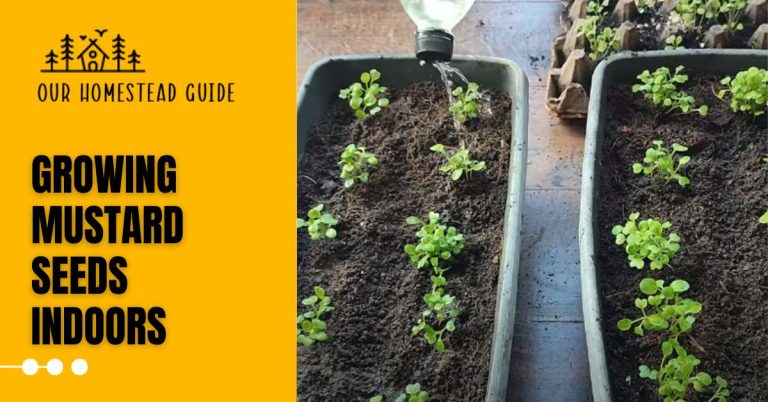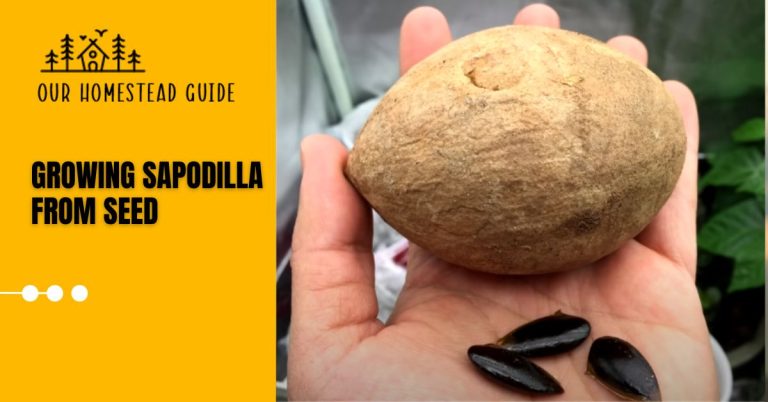How To Successfully Deal With Leggy Tomato Seedlings? Easy Steps
Leggy Tomato Seedlings having legs can be a huge problem for plants, especially plants. Legginess refers to tall, weak stem growth, often accompanied by fewer leaves and a delicate overall texture. This usually occurs when plants do not receive adequate light and move outside in search of better light conditions. Liggy plants can be problematic for a number of reasons.
Fixing Leggy Tomato Seedlings
If you find yourself asking, “What to do if tomato seedlings are leggy?” here are the steps to remedy the situation:
Step 1: Adjust Light Exposure
Increase Light: Move your tomato seedlings to a location with more direct sunlight. Each day, they require at least 6 to 8 hours of sunlight. If outdoor conditions aren’t favorable, consider using grow lights to supplement their light requirements.
Step 2: Pruning Trim Leggy Growth
Carefully cut the excessively tall stems, only keeping the sound tops. This will foster bushier growth.
Step 3: Repot Deeper
If after trimming your tomato seedlings are still lanky, repot them deeper into bigger pots or your garden. To contribute to the stem’s support and encourage the formation of robust roots, bury the stem up to the first set of leaves.
Step 4: Fertilize
Implement a Balanced Fertilizer: To encourage wholesome growth, feed your tomato seedlings with a balanced, diluted fertilizer. A lot of vegetative growth may result from overfertilizing.
Preventing Leggy Tomato Seedlings
When it comes to leggy tomato seedlings, prevention is crucial. To prevent your tomato seedlings from growing leggy in the first place, follow these instructions:
Step 1: Start with Good Seeds
Choose Reputable Seeds: To ensure healthy development from the outset, start with tomato seeds of the highest caliber from a reliable supplier.
Step 2: Provide Adequate Light
Optimal Lighting: To provide your seedlings with the light they require, combine natural sunshine with additional grow lights.
Step 3: Proper Spacing
Healthy seedlings require the right spacing. Overcrowding must be avoided since it can cause seedlings to become lanky and fight for light. Give your plants space to develop and the essential attention they require to become robust.
Step 4: Consistent Watering
For healthy plants, regular watering is essential. Maintain the soil’s moisture levels to prevent both waterlogging and drought. Your plants may become stressed from inconsistent watering, which may result in legginess and other growth problems.
Is lag a Problem?
Tomato Legs of tomatoes, characterized by their long and delicate stems, result from insufficient light conditions during early development. These sprawling plants seek more light, often becoming weak and weak. To combat this, planting them deep in the soil can promote strong root growth and overall plant resilience. Providing more light and adjusting planting practices will ensure strong tomato plants. Can prevent growth of legs by making.
- Leggy Tomato Seedlings Yes, having legs can be a huge problem, especially for a pope. Lagans refers to the length of the stems, often with low and a dense structure. His route is usually until the ship finds adequate light and he sets out to find the conditions. Leggy plants can suffer from many normal conditions.
- Core Structure: Leg stems are more prone to bending, breaking and collapsing. These multipliers can make the structure more susceptible to damage from wind, rain and soil.
- Leggy Tomato Seedlings Low Photosynthesis: Legumes often have fewer leaves in proportion to their stem length. This reduces their ability to photosynthesize, leading to stunted growth and poor overall health.
- Poor aesthetics: Legumes can look unattractive with tall, spindly stems and minimal foliage due to their asymmetrical growth. This can have a negative impact on the visual appeal of gardens or landscapes.
- Low yield: In the case of fruiting or flowering plants, leg growth can lead to low yield because the plant directs energy toward the length of stems instead of producing flowers or fruit.
- Increased Vulnerability: Leg growth creates gaps between leaves and stems, providing a hiding place for insects that can cause more damage when the insects are overcrowded and reduce the plant’s ability to defend itself against infection. she does.
- Transplanting Challenges: Transplanting leggy plants can be more difficult due to their fragile stems. This can lead to transplant shock and decreased survival rates.
To prevent wilting, it is important to provide the plants with adequate light from the start. Adequate light exposure helps promote compact, vigorous growth. If you see plants developing legs, you can bury them deep in the soil when transplanting to encourage the development of a strong root system and reduce the length of the stem above ground. . Additionally, maintaining proper spacing, using reflective surfaces to distribute light, and using proper fertilization can all help prevent or reduce legs in plants.
Why Do Seedlings Grow Leggy?
Seedlings grow leggy primarily due to insufficient light conditions. When seedlings are not exposed to enough light, they elongate their stems in an attempt to reach for the light source. This results in tall, weak, and thin stems with fewer leaves. The phenomenon of leggy growth is a survival strategy for plants to maximize their chances of getting enough light for photosynthesis. However, this type of growth is not ideal, as leggy seedlings are more prone to bending, breaking, and have a weaker overall structure.
To prevent leggy growth, it’s important to provide seedlings with adequate and evenly distributed light. Using grow lights or placing seedlings in a location with plenty of natural sunlight can help promote compact and healthy growth. Additionally, maintaining proper spacing between seedlings, controlling temperature and humidity, and using a well-balanced fertilizer can all contribute to preventing the development of leggy seedlings.
How can it be controlled leggy tomato seedlings?
Controlling leggy tomato seedlings involves creating the optimal growing conditions to prevent elongated stems and promote healthy growth. Here are some steps you can take to control legginess in tomato seedlings:
- Provide Adequate Light: Insufficient light is the main cause of leggy seedlings. Place your seedlings in a location where they receive 14-16 hours of direct or bright indirect sunlight each day. Leggy Tomato Seedlings If growing indoors, use fluorescent or LED grow lights positioned close to the plants to provide the necessary light intensity.
- Maintain Proper Temperature: Keep the temperature within the range of 60°F to 75°F (15°C to 24°C) to encourage healthy growth. Avoid exposing seedlings to extreme heat or cold, as this can lead to legginess.
- Use the Right Seed Starting Mix: Leggy Tomato Seedlings Use a well-draining and sterile seed starting mix to provide a healthy growing medium for your seedlings. This helps prevent issues like damping-off disease that can weaken seedlings.
- Avoid Overcrowding: Give each seedling enough space to grow. Overcrowding can lead to competition for light and nutrients, causing seedlings to become leggy. If using trays or pots, make sure to thin out or transplant seedlings as they grow.
- Fertilize Appropriately: Use a balanced, diluted fertilizer to provide essential nutrients to your seedlings. However, avoid over-fertilizing, as this can lead to rapid but weak growth. Follow the recommended application rates on the fertilizer packaging.
- Proper Watering: Water seedlings when the top inch of the soil feels dry to the touch. Avoid overwatering, as this can lead to root rot and weak growth. Use a watering can with a fine nozzle to provide gentle, even moisture.
- Use Air Circulation: Leggy Tomato Seedlings Providing gentle air circulation helps strengthen seedlings and prevents them from becoming overly tall. You can achieve this by using a small fan set on low near your seedlings.
- Pruning and Pinching: Regularly pinch off the tips of the seedlings when they have developed a few sets of true leaves. This encourages lateral branching and more compact growth.
- Transplant Carefully: When transplanting your seedlings into larger containers or the garden, bury the elongated stems horizontally in the soil, leaving only the top leaves above the surface. This buried stem will develop roots and provide additional support.
- Hardening Off: Before planting your seedlings outdoors, gradually acclimate them to outdoor conditions through a process called “hardening off.” This involves gradually exposing the seedlings to outdoor conditions, starting with short periods of time and gradually increasing exposure.
By following these steps and providing the right care, you can effectively control leggy tomato seedlings and promote strong, healthy growth. Remember that prevention is key, so starting with proper growing conditions from the beginning will yield the best results.
Why are the nipples enlarged?
Plants grow legs mainly due to insufficient light conditions. When plants are not exposed to enough light, they elongate their stems in an attempt to reach the light source. This results in tall, weak and thin stems with fewer leaves. The tendency to grow legs is a survival strategy for plants to maximize their chances of getting enough light for photosynthesis. However, this type of growth is not ideal, as leggy plants tend to bend, break, and have a poor overall structure.
To prevent leg growth, it is important to provide plants with adequate and evenly distributed light. Using grow lights or planting in a location with plenty of natural sunlight can help promote compact and healthy growth. Additionally, maintaining proper plant spacing, controlling temperature and humidity, and using a well-balanced fertilizer can all help prevent leggy plant growth.
Conclusion
Don’t be deterred from establishing strong, fruitful tomato plants by leggy tomato seedlings. You may reap a plentiful crop of delectable tomatoes from your garden by comprehending the reasons and taking the necessary actions to treat and avoid legginess. Keep in mind that raising your seeds into healthy, thriving plants requires time and the right care.
Most Frequently Asked Questions!
Q1: What are leggy tomato seedlings?
Leggy tomato seedlings are young tomato plants that have elongated and weak stems with limited foliage development. They often appear stretched and thin due to insufficient light exposure, causing them to grow taller as they reach for more light.
Q2: Why do tomato seedlings become leggy?
Tomato seedlings become leggy primarily due to inadequate light conditions. When seedlings don’t receive enough light, they tend to stretch out in search of light, leading to elongated stems. Other factors that can contribute to leggy seedlings include overcrowded growing conditions, high temperatures, and improper watering practices.
Q3: How can I prevent leggy tomato seedlings?
To prevent leggy tomato seedlings, provide them with sufficient light from the start. If you’re growing seedlings indoors, use fluorescent or LED grow lights positioned close to the plants to provide the necessary light intensity. Avoid overcrowding seedlings in trays or pots, as this can lead to competition for light and space. Additionally, maintain appropriate temperatures and water the seedlings correctly to promote healthy growth.
Q4: Can I fix leggy tomato seedlings?
While you can’t completely reverse legginess in tomato seedlings, you can help them become sturdier by burying the elongated stems when transplanting them into larger pots or into the garden. Bury the stem horizontally in the soil, leaving only the top leaves above the soil surface. The buried stem will develop roots, providing the plant with more support and stability.
Q5: How can I encourage healthy growth in tomato seedlings?
To encourage healthy growth in tomato seedlings, ensure they receive adequate light, preferably 14-16 hours of light per day. Use a balanced fertilizer to provide essential nutrients. Maintain appropriate temperatures; tomato seedlings thrive between 60°F and 75°F (15°C to 24°C). Properly water the seedlings, allowing the soil to dry slightly between waterings.
Q6: Should I prune leggy tomato seedlings?
Yes, you can prune leggy tomato seedlings to encourage bushier growth. Pinch off the top few inches of the elongated stem to stimulate lateral branching. This will help distribute growth energy to the side branches, making the plant more compact and sturdy.
Q7: When should I transplant leggy tomato seedlings?
Transplant leggy tomato seedlings when they have developed a few sets of true leaves and are strong enough to handle the transplant process. Before transplanting, you can bury the elongated stems to promote better root development.
Remember that preventing legginess is easier than correcting it. Providing the right growing conditions from the beginning will lead to healthier and more vigorous tomato seedlings.
you may also like this article




